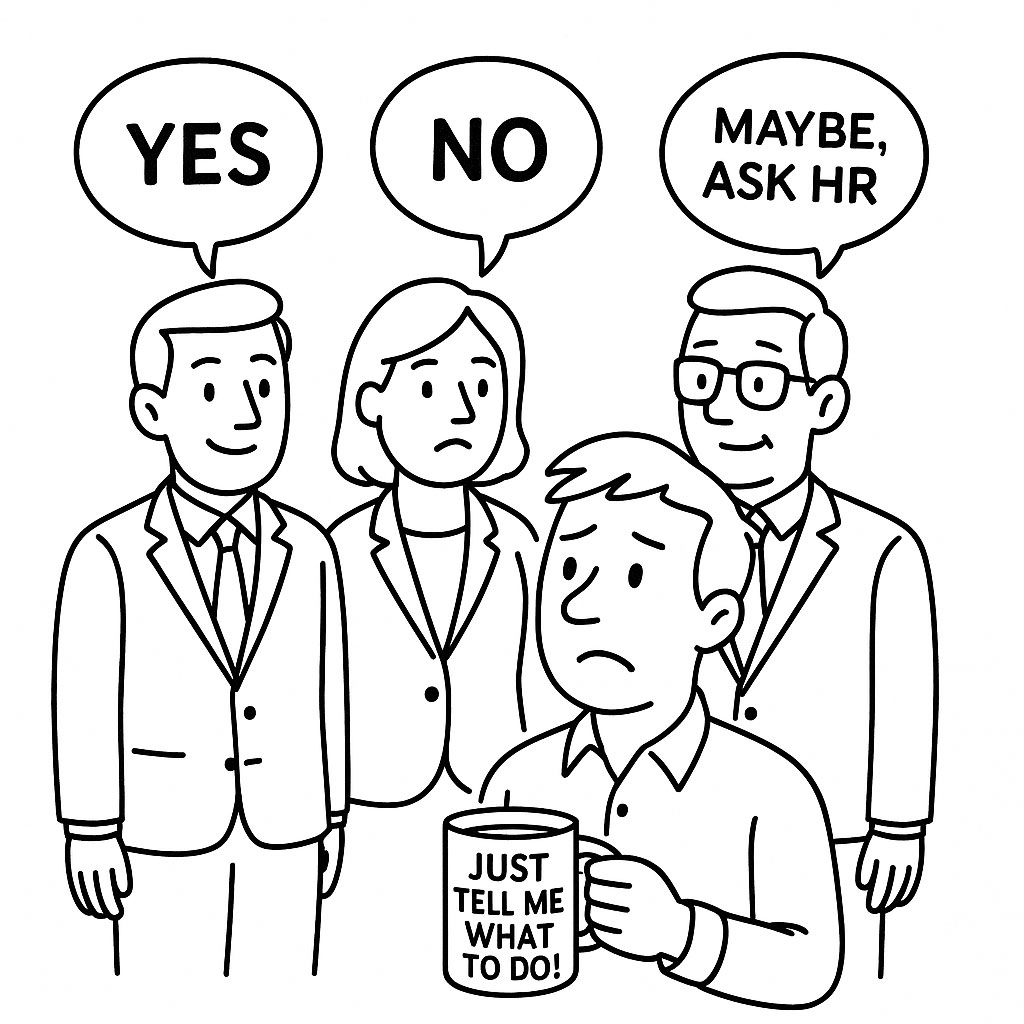Ever worked somewhere where what you’re told depends on which manager you ask?
One says yes, another says no, and a third says, “We don’t really worry about that here.”
It’s confusing, frustrating, and honestly, it makes people stop trusting the system altogether.
That’s what happens when a leadership team isn’t aligned.
Take policies, for example.
If one manager sticks to company policy and asks for a medical certificate after a couple of sick days, but another doesn’t ask for one and approves the time off as sick leave for payroll anyway, what message does that send?
It tells employees that the rules aren’t really rules. They’re more like suggestions, depending on who you report to. And once that starts happening, consistency goes out the window. People begin comparing notes, frustration grows, and before long, you’ve got tension in the team.

The same thing happens with communication.
If some managers are open about what’s happening in the business by sharing updates, direction and future plans, but others keep quiet, then you end up with a workplace full of mixed messages.
Some employees feel “in the loop” and valued, while others feel left out and anxious because they’re always the last to know. That uneven flow of information can quietly chip away at trust and morale.
When employees are treated differently or given different information depending on their manager, it creates a fractured culture. You might hear things like:
- “Why does that team get to work from home, but we can’t?”
- “My manager said something totally different.”
- “I don’t even bother asking anymore. It depends who you talk to.”
- “The X team were told that we all needed to turn off our computers tonight. No-one told us”
Before long, people stop focusing on the work and start focusing on the unfairness. Cliques form. Gossip spreads. Engagement drops. It’s not that people want to cause drama, it’s that inconsistency breeds frustration and uncertainty. And when there is frustration, uncertainty and a lack of engagement you can be absolutely certain that there is a negative impact on performance and productivity. Not what most businesses are aiming for!
What aligned leadership looks like
An aligned leadership team doesn’t mean everyone has to think exactly the same way or never disagree. Healthy debate is great. But once decisions are made, everyone needs to back them.
Aligned leaders:
- Apply policies consistently – no favourites, no exceptions without good reason.
- Communicate the same key messages – so every employee hears the same thing, no matter who they report to.
- Back each other up – even when it’s not the decision they personally would’ve made.
- Model shared values – so the team sees one united front.
When leaders do that, the whole workplace feels steadier. People know where they stand, trust grows, and culture strengthens.
An effective and aligned leadership team understands that they have a responsibility to do what’s in the best interest of the whole company, not just their team or one of their team members.
The bottom line?
A leadership team that’s not aligned might not sound like a big deal at first. Just a few small inconsistencies here and there. But over time, those cracks widen and can seriously damage culture, trust, and team morale.
Consistency doesn’t kill individuality, it builds credibility. When employees can rely on fair, clear, and consistent leadership, they can focus on doing great work rather than guessing what’s really going on.
The role of a leader is to enhance the operations and profit through their efforts and the efforts of their team. When leadership across the company is aligned, it gives every person, every team, and every leader, the opportunity to fulfil their roles and achieve the goal of enhanced operations and profit.
If you need some assistance getting your leadership team aligned and working well together for the good of the whole business, reach out to us at any time. We’re here to help.







